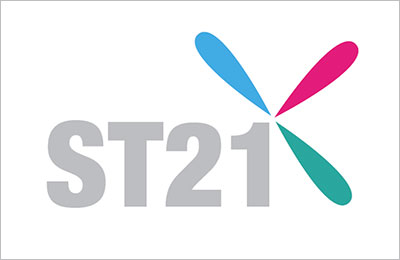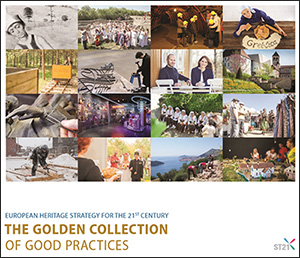Location of the initiative:

Relation to Strategy 21 Recommendations:
S5 - Encourage and assess citizen participation practices and procedures
Time span of the initiative:
Start Date: 11 July 1966 / End Date: On-going
Motivation / Methodology
The Union Rempart is a union of heritage protection and community education associations whose role is the restoration of monuments. Founded on 11 July 1966 by the Touring club de France, it was awarded public utility status in 1982. REMPART is the acronym for Réhabilitation et Entretien des Monuments et du Patrimoine ARTistique (rehabilitation and upkeep of monuments and artistic heritage).
The 180 associations in the Union all share a common aim: to restore and protect a heritage item and give it a new lease of life, contributing to local and regional development, particularly in rural areas. Most of them organise worksites for volunteers, enabling thousands to take part in voluntary-sector projects each year to protect and revitalise heritage. REMPART’s worksites are an opportunity not only to learn more about heritage and restoration techniques but also how to live with others and practise citizenship.
REMPART’s member associations work on a wide variety of heritage sites: chapels, forts, priories, châteaux, mills, lime kilns, railways, gardens, forges, terraces, whether they are listed historical monuments or ordinary small heritage sites. The sites may be of any age, from prehistory to the present day, with no particular emphasis on any period. The aim of the REMPART movement is not only to restore heritage but also to make sure that, once restored, the buildings are put to good use and given a place in the modern world. The restoration and reutilisation aspects of our work are inseparable.
Each project is the fruit of collaboration between the local REMPART member association and local partners (population, public authorities). The local social, economic and cultural environment and the human, financial and technical means available to the local association are all taken into account, as of course are the potential and identity of the building in question. The projects are supported by central government, the regions, the départements and local authorities, and by various private partners, such as the Heritage Foundation (Fondation du patrimoine).
The REMPART worksites – holidays put to constructive use: every summer, thousands of people choose to help protect the heritage by taking part in international volunteer worksites. They restore and enhance washhouses, hamlets, châteaux, churches, whether listed or not. Through their active citizenship they help to keep our towns and regions alive while at the same time enjoying the camaraderie of working with others.
Projects all year round: it’s not just in summer that worksites can become operational. Some REMPART associations offer worksites or training experience at weekends and during short school holidays, and even all year round. However, there are other ways of participating, such as through a civic service mission or overseeing a worksite. To that end, REMPART organises training courses for project supervisors. Its work has been awarded the European Year of Cultural Heritage quality seal.
Obstacles / Barriers
In its life experience the association has had to resolve many issues, such as how to guarantee that the volunteer work provided for heritage sites does not fall into private hands? How to bring volunteers to practical heritage conservation? How to keep on enrolling new audiences year after year and ensure that our action on heritage can really be everyone’s matter? By developing specific tools to build up secured and long-term lease between the association and the sites owners, REMPART ensures by instance, a clear distinction between private interest and common good. By developing courses for group leaders and facilitators, the association takes care of the quality of the pedagogy implemented during the heritage camps organised under its patronage. Specific programmes are also developed to raise public and private funds and offer everyone to have the experience of heritage with REMPART. This last objective is a priority for us and must mobilise more resources from our financial partners. In a world where technologies tend to transform the way we interact, by bringing people together, especially young ones, during 10 to 15 days to share hands on activities on ancient buildings, in some (in most of cases) rural or isolated places, is a huge challenge. We have to be creative, fun and welcoming. One must constantly communicate to remind to all the virtues of the commitment and volunteering. Today, the association is by instance looking for more partnerships at the international stage in order to ensure the cultural diversity of its projects in France. REMPART also expects an increase of the European funds available for heritage education and youth mobility related to heritage restoration.
Change / Impact
The number of volunteer worksites is growing from year to year. The initiative is recognised and supported by public institutions and local and regional authorities.
· 3500 volunteers on worksites each year
· 10,000 citizens involved in heritage work
· 180 associations in France
· 50 partner organisations in 30 countries
· over 50 years’ experience
· 800 heritage sites restored
Lessons learned
Sustainable preservation and restoration of buildings: all areas of trades and professions associated with heritage restoration are involved (stonemasonry, masonry, carpentry, stained glass window work, roofing, etc.).
· Education and training of volunteers (accepting responsibility, independence of each volunteer, and learning about techniques); social and occupational integration: the worksites are supervised by professionals who teach volunteers how to carry out quality work on a historical monument (whether listed or not and often subject to strict specifications), with the aim of passing on knowledge, know-how and best practices while the worksite is operational.
· Short supply lines (materials, know-how and local employment)
· Diverse sources of funding
· Networking of all stakeholders, raising the awareness of elected representatives and local communities
Online resources
- https://www.rempart.com
- https://www.rempart.com/sauvegarde-restauration-patrimoine/uploads/2018/03/REMPART-Communiqu%C3%A9-Mission-patrimoine-2018-29-03-2018.pdf
- www.patrimoineeurope2018.fr
Contact information
Fabrice Duffaud
Union Rempart
duffaud@rempart.com
www.rempart.com
Source of financing
Public/private funding





